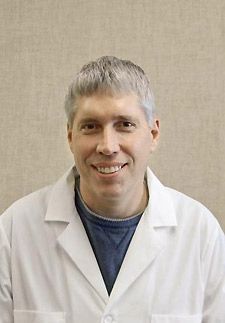The CAD/CAM Chorus: View from an early adopter
January 2011 | Dental Lab Products The CAD/CAM Chorus View from an early adopter Scott Udell – Manager, Udell Dental Laboratory by Noah Levine, Senior Editor
January 2011 | Dental Lab Products
The CAD/CAM Chorus
View from an early adopter
Scott Udell – Manager, Udell Dental Laboratory
by Noah Levine, Senior Editor
Udell Dental Laboratory has not been afraid of embracing the change CAD/CAM technology is bringing to the dental industry. In fact, the family-run St. Louis Park, Minn. lab has tried to stay at the forefront of the technology, adopting new systems early and working to stay ahead of the competition.

“We wanted to set ourselves apart from the competition and to try to go where we thought the future of dentistry was going,” Manager Scott Udell said. “We were definitely on the early side and I think we still are. The technology has now caught up to where we wished it was when we started.”
The lab brought in Sirona’s inLab system in 2006 and two years later followed it up with Sensable Technologies’ Sensable Dental Lab system. Udell has seen all of the technology improve greatly since that time, in particular the user friendliness of systems, and watched the lab’s workflow change dramatically. He admits labs adopting digital solutions now might have an easier time of it because of these changes. Being an early adopter helped Udell and the lab keep a grip on what types of CAD/CAM systems seem to be working well and which ones are not likely to be around for the long term.
Four years into his lab’s digital adoption, Udell said he rarely if ever designs and fabricates frameworks traditionally-for any restoration type. Still, he feels there is plenty of room for the technology to grow. Thus far the CAD/CAM systems have definitely improved the fit and quality of his lab’s finished restorations and drastically changed the workflow, although achieving continued efficiencies with any technology is more of an ongoing process.
For any system investment, Udell has found that to make the systems pay for themselves he’s needed to increase production over the numbers he’d been doing prior to going digital; the efficiencies themselves do not cover the cost of the systems. Because of this, Udell’s lab does as much digital production as possible and looks forward to taking advantage of new software and hardware updates and also new partnerships to further leverage the advantages of going digital.
“As each new version becomes more efficient, we look to realize even more time-savings,” he said.
Going digital already has provided big benefits when it comes to employee turnover and training new technicians. This is especially true when it comes to removables, Udell said, because training someone on the Sensable system makes for a more streamlined learning curve.
“It’s much easier to teach partial design on a CAD system than it is to try to teach it with traditional methods,” he said. “There’s so many steps doing it the old fashioned way that are very difficult to teach. The software automates the learning process so you can accomplish the learning curves in manageable phases.”
Embracing digital technologies was about internal improvement at the lab, and at least for now, Udell said most of his dentists don’t know about how the restorations are being fabricated. However, the dentists do notice that fit and consistency has improved, and remakes have decreased across the board.
Udell said when dentists do start embracing the digital side of the industry and chairside digital impressions take off, this will allow his lab to really optimize the workflow. When cases come in for his inLab system via the CEREC Connect network, he’s able to quickly and efficiently print and press or mill a crown from Ivoclar Vivadent’s e.max material, and that pleases the dentist and his bottom line.
“Simply sinter, stain and glaze, then return the restoration to the doctor, and we’re not having any adjustments,” he said. “The crowns don’t come back, and the doctors are very happy. There’s very few people doing (CEREC Connect cases), but the ones who are, are very happy with the process.”
While he knows it will probably be a number of years before that business model is a major part of his lab’s workload, Udell said it feels good to be in that arena early so the lab can be off and running when the demand increases. Being digital now also is a way for his lab to stay competitive in a global market where he has to compete with foreign labs that have far lower costs for labor. This all-digital workflow means he can offer the same product with limited labor costs on his end and he can get it back to the dentist faster than if the dentist were to send the case offshore.
“Monolithic restorations really give the lab a great business model that will be more difficult for overseas labs to compete with,” Udell said.
Certainly, the process of incorporating digital technologies into his lab has not always been free of speed bumps, but Udell is confident that the direction he is taking his lab is keeping the business ahead of labs that are taking a wait and see approach to new technologies.
“I think it will be 3-5 five years before the majority of labs are doing what is available today,” he said.